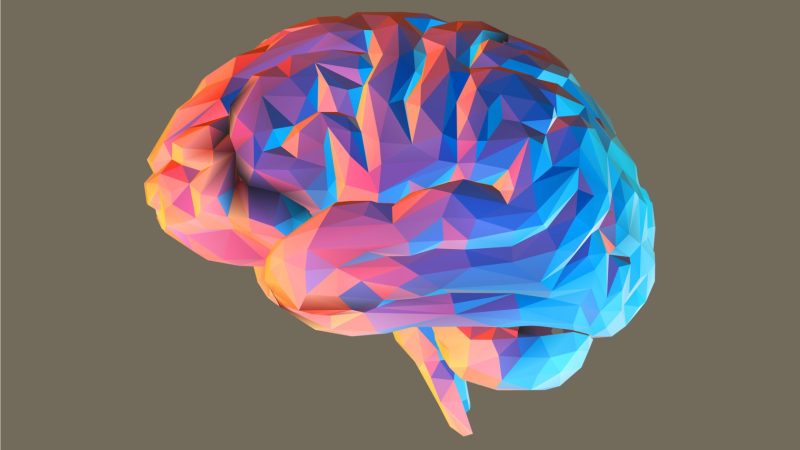Health
Does your brain reflect your sex?
Precision medicine is just one field where the answer matters
Part of the
Wondering
series
A series of random questions answered by Harvard experts.
Jill Goldstein is a clinical neuroscientist, a professor at Harvard Medical School, and the founder and executive director of the Innovation Center on Sex Differences in Medicine at Mass General. She told us what science has revealed about sex differences in the brain.
When we talk about sex differences in the brain, there are a number of things to keep in mind.
First, sex and gender are different. Sex is based on the biology of the impact of sex chromosomes and gonadal hormones on the brain and body, whereas gender refers to the social roles and behaviors of an individual. Second, there are a lot of opinions about sex differences, and these can be informed by many things. The science of sex differences in the brain is built on a strong body of evidence going back decades. The difference in public opinion, on the other hand, can be traced even further back. Then, in the 1960s, there was a lot of discussion about the roles of women in the workforce and otherwise, and there was a fear that any research regarding sex differences in the brain would suggest that men were superior. Ironically, we have found that in many ways women’s brains are more robust. But this line of thinking sets up an unnecessary and false competition that results in anti-intellectual thought and in the omission of important aspects of the conversation, especially when it comes to studying health, wellness, and disease.
Many chronic diseases and disorders affect men and women differently. How might better understanding the brain’s role – including sex differences – lead to more efficacious treatments and help save lives?
So, are men and women’s brains different? The short answer is yes, and this difference begins during fetal development around the start of the second trimester. Sex chromosomes — whether a fetus has XY (for males), XX (for females), or some variation of these — and gonadal hormones drive the regulation of sex differences in development of the body and brain. The so-called organizational effects of hormones on the brain can be retained across the lifespan, although there are many variations on, for lack of a better term, the sexual dimorphisms of the brain. That is, no one who studies the biology of sex on the brain believes there can be only two forms, even though we use the word sexual dimorphisms to indicate specific differences.
While organizational effects of hormones set the stage in fetal development and in puberty, environmental exposures affect the expression of our biology, even though some of the basic biologic differences may be set in early development. This results in more brain variability within sex than there is between the sexes. That is, there are greater differences within women and within men than there are between men and women. However, it is the small differences in the brain that can have important implications for why, for example, we see sex differences in almost every disorder of the brain we know, including depression, anxiety, substance use disorders, schizophrenia, autism, and Alzheimer’s disease. Also, sex differences in the brain vary depending on timing across the lifespan. For example, sex differences emerge when the brain and body are either differentially flooded with gonadal hormones — like in fetal development, puberty, pregnancy — or depleted of gonadal hormones in menopause, when compared with age-matched men. These natural reproductive stages can provide important windows of opportunity to understand how and why we see sex differences in the onset, prognosis, and course of so many illnesses that can lead to differences in treatment response.
Even brain regions in the same woman may activate differently at different points in her menstrual cycle. These so-called activational effects of gonadal hormones demonstrate that the brain acts differently under different hormonal changes. Depending on when you are comparing men to women in a study, this can have an impact on your findings. However, these differences in brain activity do not necessarily lead to differences in behavior. Sex differences in brain activity may produce similar behavior in women and men. For example, when a female is in certain phases of her menstrual cycle, hormones may impact brain activity differently but her behavior or performance on tasks may not differ at all. This variation is one of the reasons sex differences in the brain can be complicated to study. However, with knowledge of sex differences in the brain, one can account for these variations in a study’s design.
In fact, there are reasons it’s so important to continue studying sex differences in the brain and to differentiate these from gender differences. Many chronic diseases and disorders affect men and women differently. How might better understanding the brain’s role — including sex differences — lead to more efficacious treatments and help save lives?
There is still so much to learn. The brain is a versatile organ that changes constantly throughout the lifespan. Understanding its biology is critical, especially for the development of more effective diagnostic tools and therapies that incorporate the impact of sex, leading to the realization of precision medicine.
— As told to Samantha Laine Perfas/Harvard Staff Writer
Get the best of the Gazette delivered to your inbox
By subscribing to this newsletter you’re agreeing to our privacy policy





